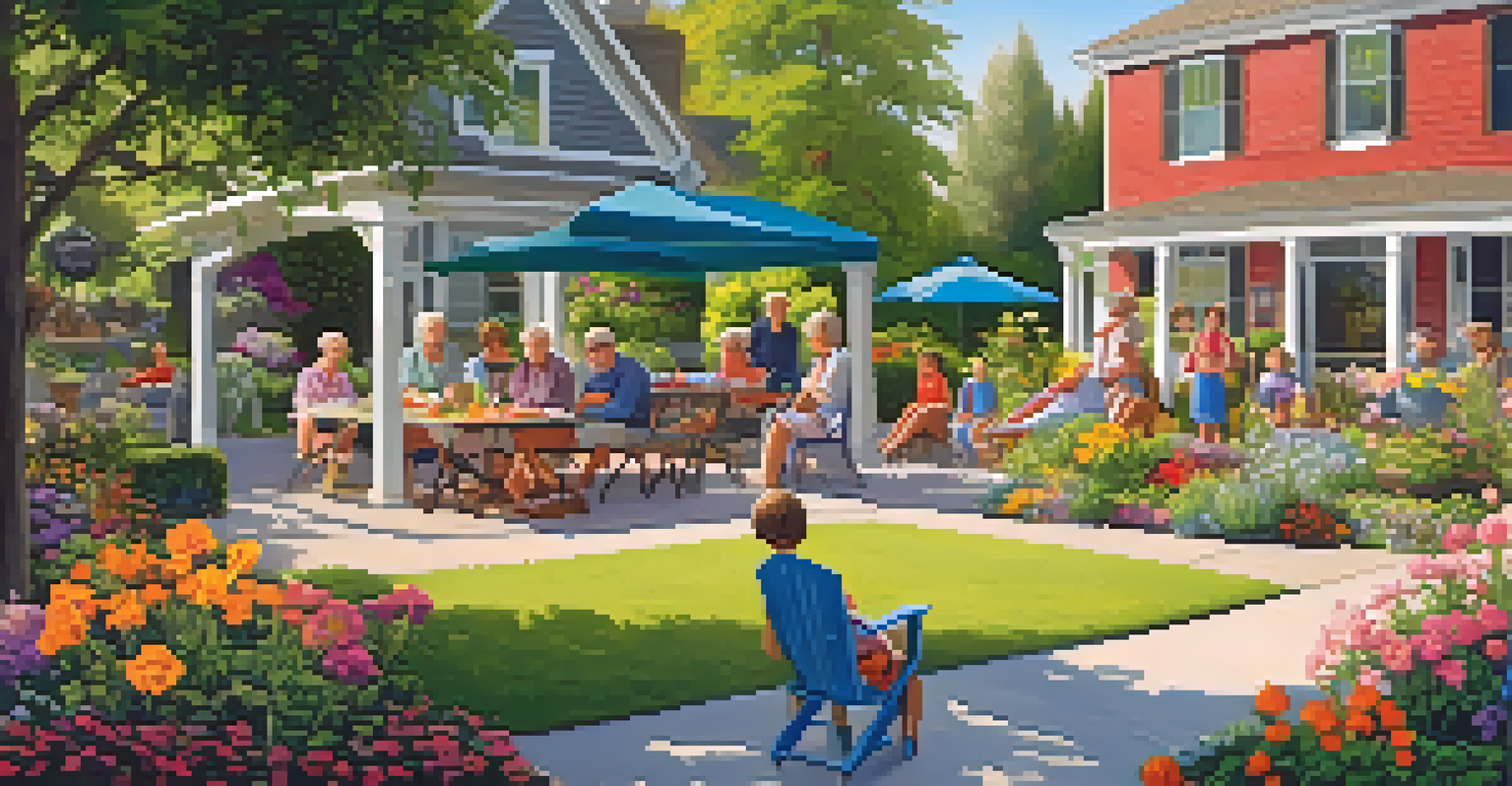Building Community in Multi-Generational Living Spaces

Understanding Multi-Generational Living Spaces
Multi-generational living spaces are homes where multiple generations share the same roof, such as grandparents, parents, and children. This arrangement is becoming increasingly popular as families seek to provide support and companionship to one another while saving on living expenses. The dynamics in these homes can be enriching, blending different perspectives and experiences.
Family is not an important thing. It's everything.
However, living under one roof also comes with its challenges, primarily due to varying lifestyles, values, and expectations. For instance, the quiet routines of an elder might clash with the energetic pace of young children. Recognizing these differences is essential for building a harmonious household where everyone feels valued and respected.
Ultimately, understanding the unique characteristics of multi-generational living is the first step toward creating a thriving community. By appreciating each member's role and contribution, families can foster a nurturing environment that benefits everyone involved.
Creating Shared Spaces for Interaction
Creating shared spaces within the home is a fundamental aspect of building community. Common areas like living rooms, kitchens, and gardens can serve as gathering spots for family members to connect. By designing these spaces with comfort and accessibility in mind, everyone can feel welcomed and included.

Consider incorporating flexible furniture arrangements that allow for both group activities and quiet moments. For example, a large dining table can host family meals, board games, or even homework sessions. These moments spent together can strengthen bonds and help establish a sense of belonging.
Building Community in Shared Spaces
Creating comfortable shared areas fosters interaction and strengthens family bonds in multi-generational living.
Additionally, outdoor spaces like patios or gardens can enhance community interactions, providing a space for barbecues or gardening projects. The key is to create an environment where everyone feels encouraged to engage with one another, fostering deeper connections.
Establishing Communication Channels
Effective communication is the backbone of any thriving community, especially in multi-generational settings. Regular family meetings can be a great way to discuss needs, preferences, and any issues that arise. This practice not only encourages transparency but also ensures that everyone's voice is heard.
The strength of a nation derives from the integrity of the home.
Using group messaging apps or calendars can help keep everyone informed about family events or responsibilities. For instance, coordinating dinner plans or shared chores becomes easier with a communal platform. This technology can bridge the gap between generations, making it simple for everyone to stay connected.
Ultimately, fostering open lines of communication helps build trust and understanding among family members. When everyone feels comfortable sharing their thoughts, it leads to a more cohesive living environment.
Encouraging Individual Interests and Hobbies
While community is essential, it's equally important to recognize and celebrate individual interests. Encouraging family members to pursue their hobbies can create a sense of autonomy and fulfillment. For example, a grandparent might enjoy gardening while a teenager is passionate about music; both activities can coexist harmoniously in the same home.
Creating spaces dedicated to these hobbies can also inspire collaboration. A shared workshop or art studio can bring family members together, allowing them to learn from each other’s skills and experiences. By celebrating individual passions, the family can grow closer while also appreciating the uniqueness of each member.
Importance of Open Communication
Establishing effective communication channels enhances trust and understanding among family members.
This balance between community and individuality enriches the multi-generational living experience. It creates an environment where everyone can thrive while still contributing to the overall family dynamic.
Planning Family Activities and Traditions
Family activities and traditions are vital in nurturing a sense of belonging. Regularly scheduled game nights, movie marathons, or even seasonal celebrations can create lasting memories and strengthen family ties. These shared experiences can serve as the glue that holds the family together, fostering a sense of unity.
Incorporating traditions from different generations can also enrich family connections. For instance, sharing stories about family history during holiday gatherings can enhance understanding and appreciation among members. This blending of traditions helps everyone feel included and valued.
Ultimately, the goal is to create moments that everyone looks forward to. By planning these activities, families can cultivate a sense of community that resonates through generations.
Navigating Conflicts with Empathy
In any living arrangement, conflicts are bound to arise, especially in multi-generational environments. The key to navigating these disputes lies in approaching them with empathy and understanding. Acknowledging each person's viewpoint can help resolve issues more amicably and strengthen relationships.
When conflicts do occur, it’s essential to address them promptly rather than letting them fester. Family members should feel encouraged to express their feelings, ensuring that everyone is heard. For example, if a teenager feels overwhelmed by household responsibilities, discussing it openly can lead to a solution that satisfies everyone.
Balancing Community and Individuality
Encouraging personal interests alongside community activities enriches the multi-generational living experience.
Empathy not only helps in conflict resolution but also cultivates a supportive atmosphere. In a multi-generational home, building a culture of compassion allows family members to feel secure in expressing their needs and concerns.
Fostering a Sense of Belonging for Everyone
Creating a true community in multi-generational living spaces revolves around fostering a sense of belonging. Each family member should feel valued and recognized for their contributions, whether big or small. Simple gestures like expressing gratitude can go a long way in making everyone feel appreciated.
Encouraging participation in decision-making processes can also enhance this sense of belonging. Involving everyone in discussions about family activities, chores, or even home improvements can empower members and reinforce their importance within the family unit. This collaborative approach ensures that everyone’s opinions are considered.

Ultimately, when each family member feels they belong, the entire household thrives. A united community not only enhances daily living but also creates a nurturing environment that can positively impact everyone’s well-being.